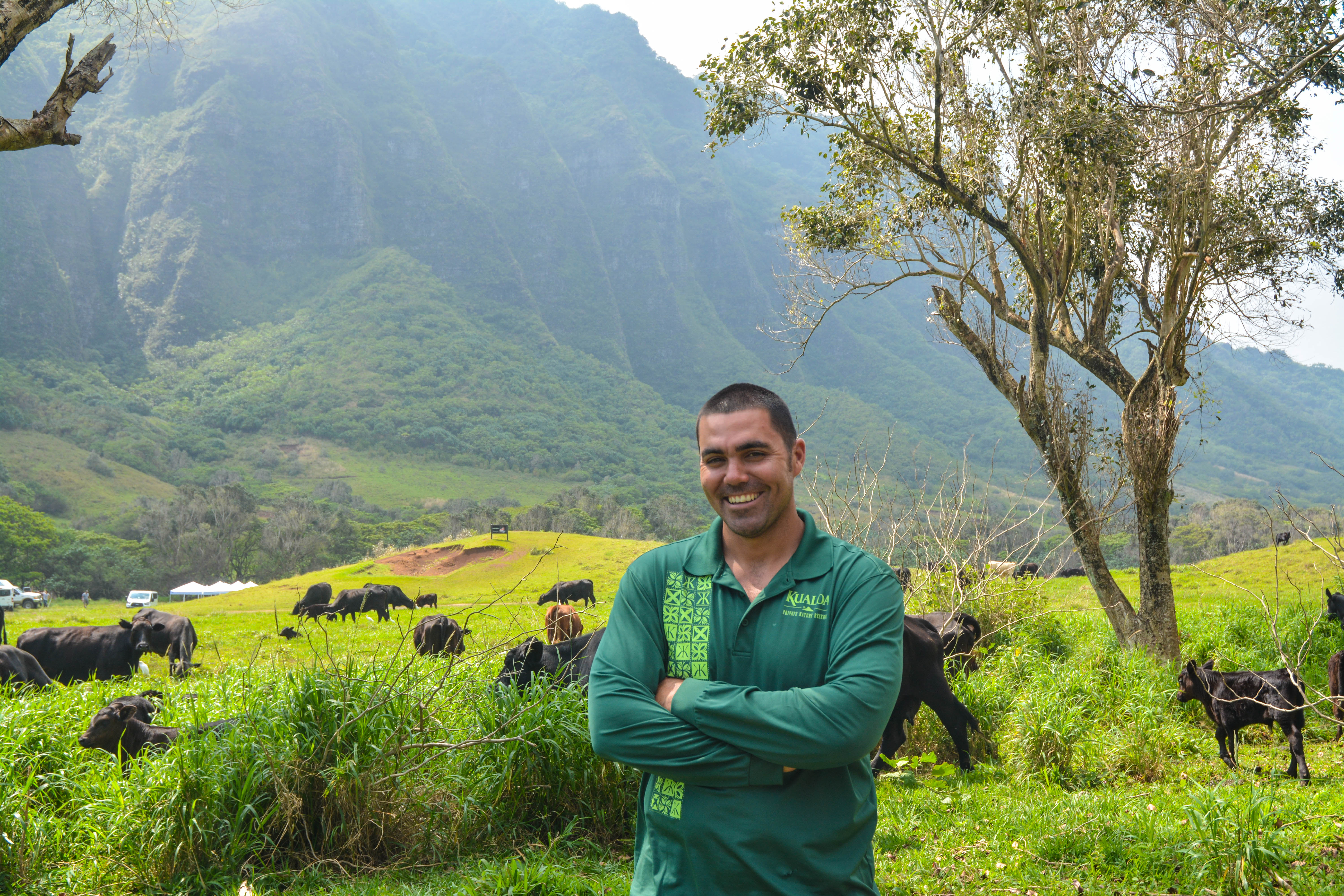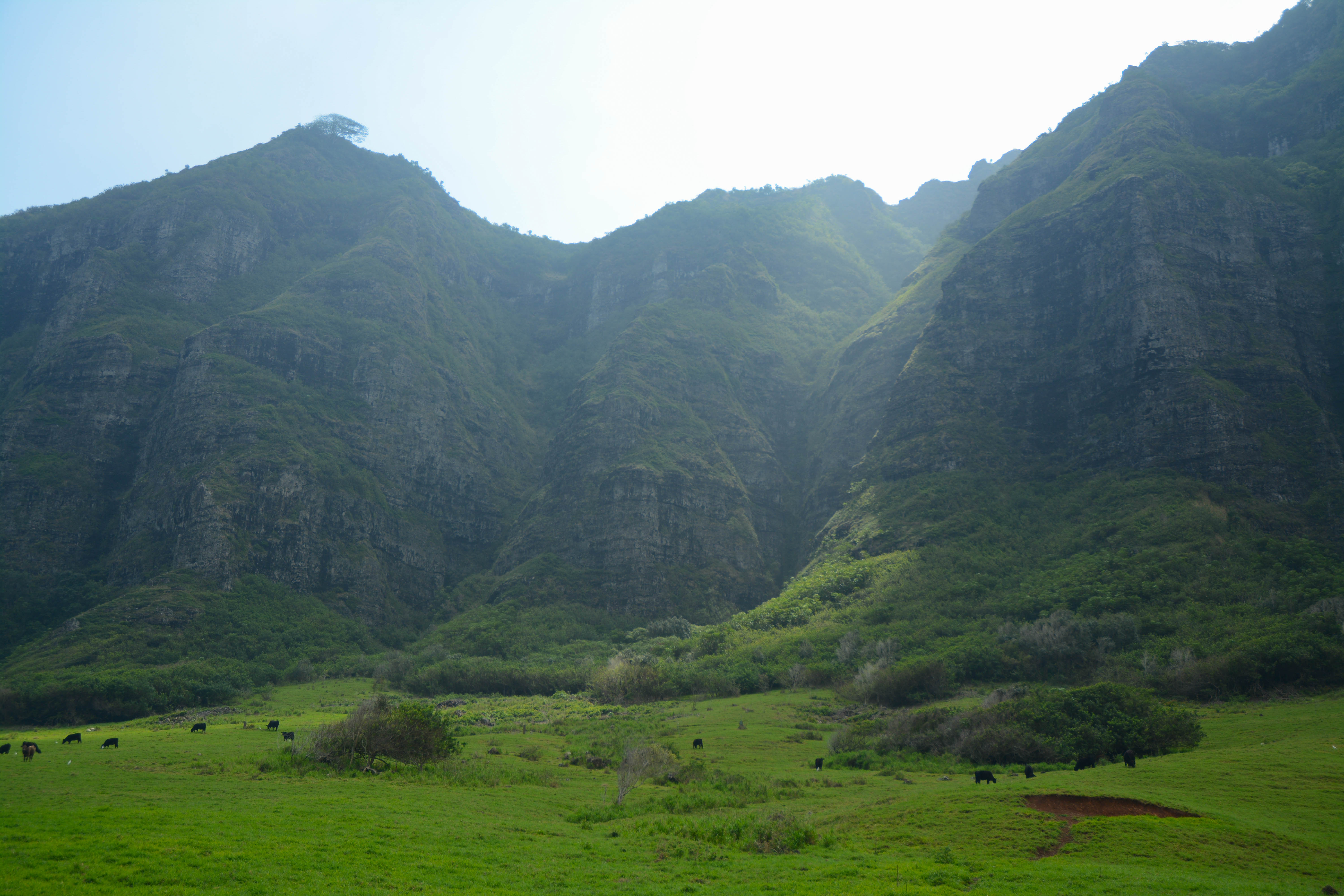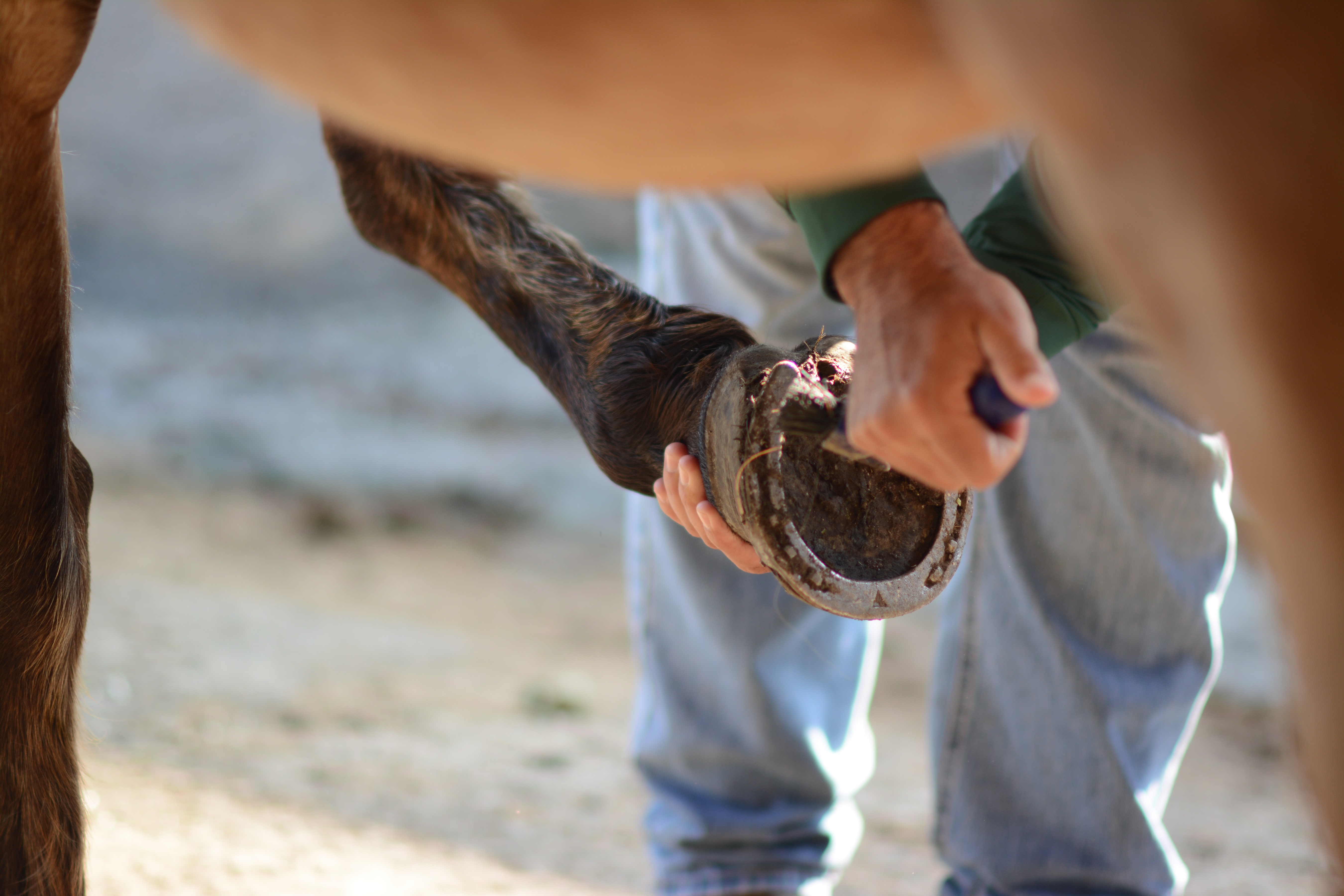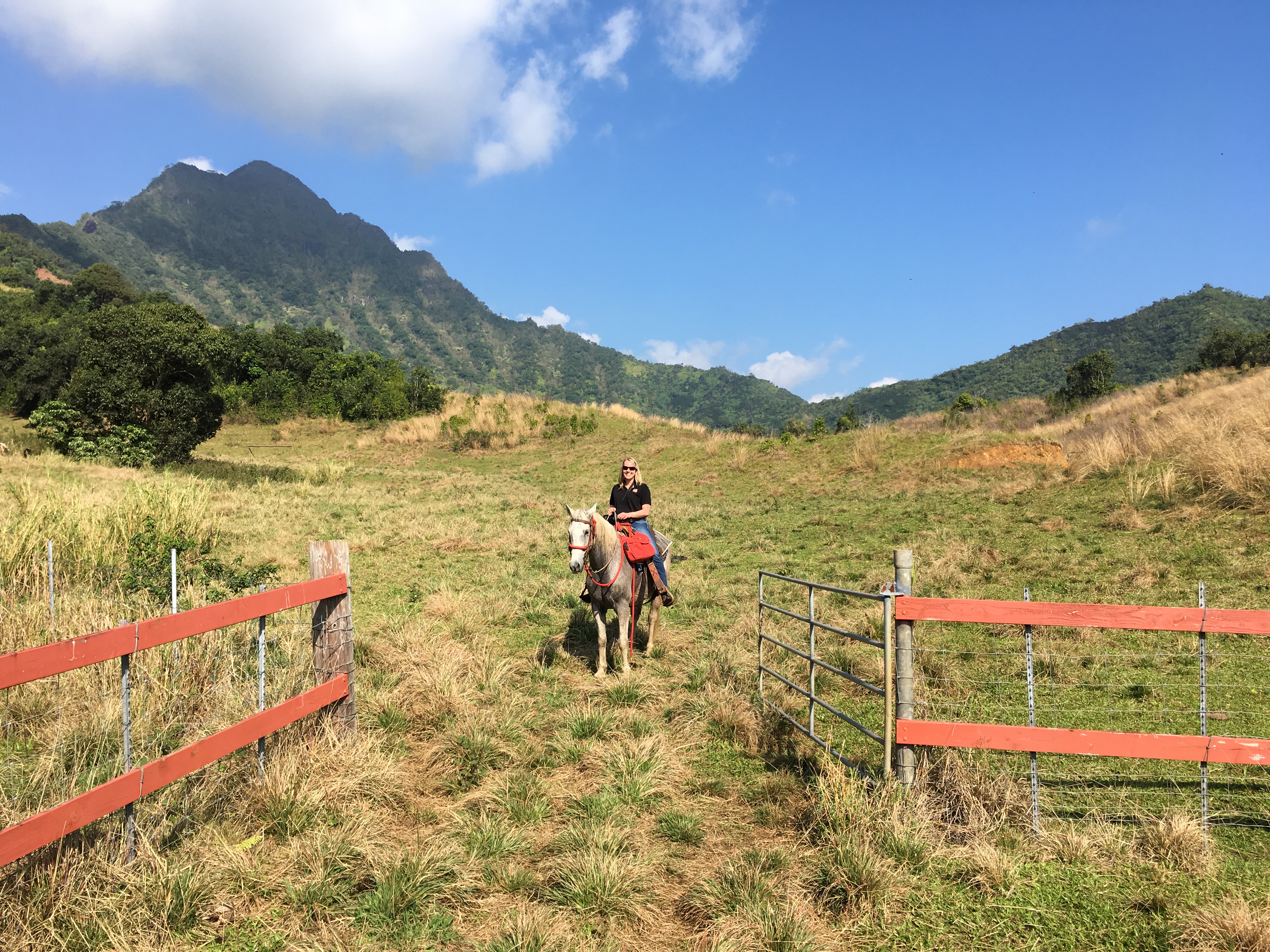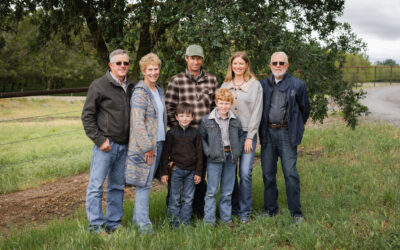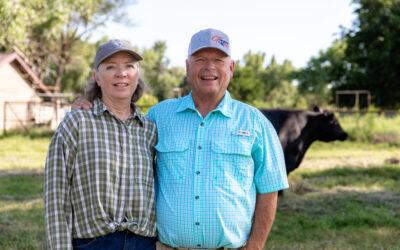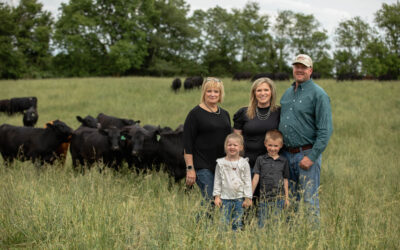Behind the scenes: the ranch from the movie scenes
It was the first time I’d waited for a cattleman in a gift shop and visitor center. Ryan Schultz, at Kualoa Ranch, was just getting back from his first chores of the day as tour buses started to roll in. Those travelers came to see where dozens and dozens of movies and TV shows—from Jurassic Park to Lost—were filmed on the 4,000 acres of Hawaiian countryside. Others had booked the ATV tour, horseback riding or a trip out to the private island.
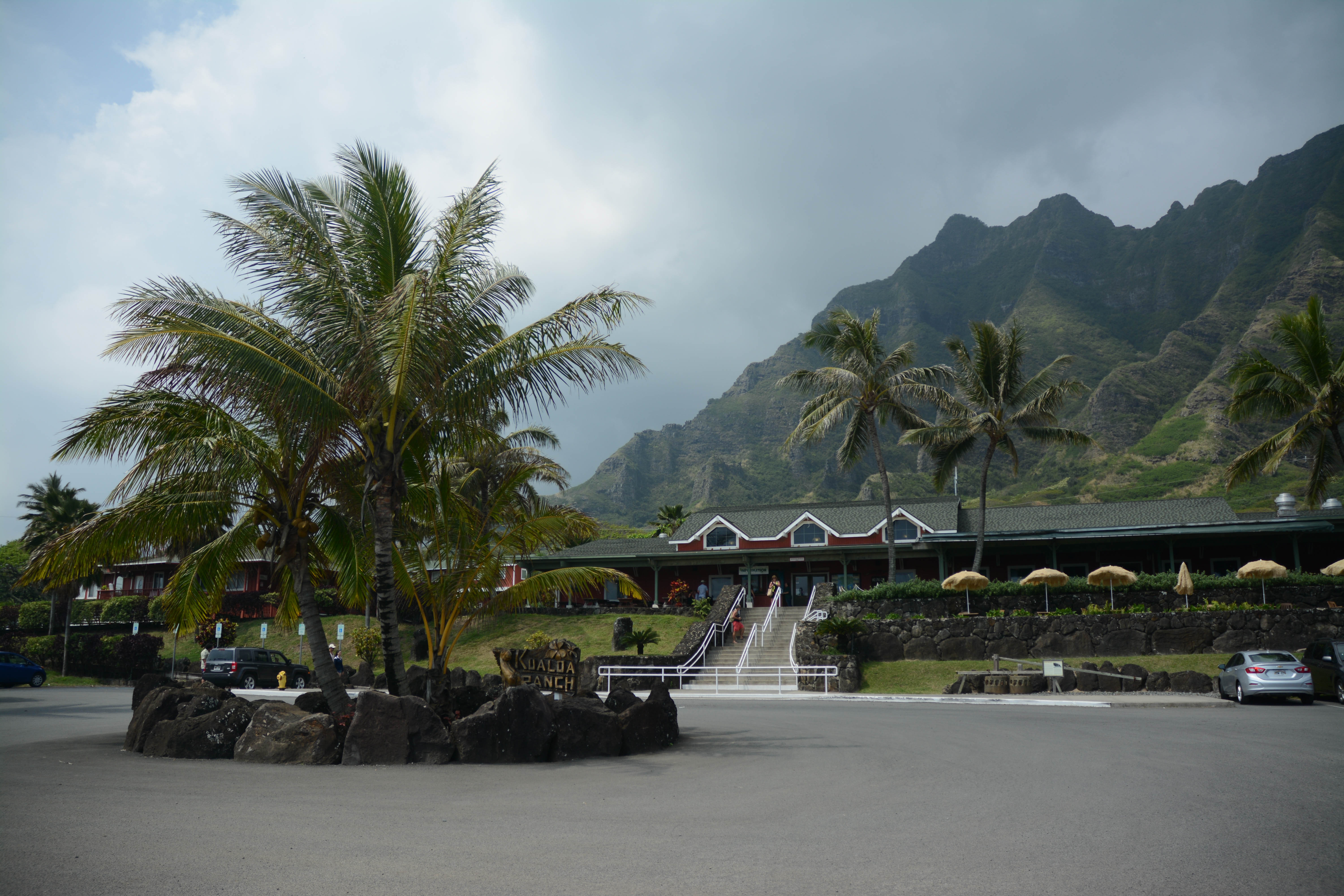
I was probably the only one interested in how Angus cattle fit into the mix. But the remaining Godzilla rocks scattered in the pasture didn’t fool me. The herd that started in the 1870s, shortly after the sugar mill folded because the soil isn’t conducive to cane, is still an important enterprise. “Cattle do the natural landscaping. You could never hire a full-time landscaper to do what they do,” Ryan says, motioning toward the foreground that sets off the dramatic Ko’olau Mountains. He may have to move cattle to a different pasture from time to time, but mostly the animals just coexist with the commotion that they’ve come to regard as normal.
While I was there, the row of cars lined up near a catering tent gave it away: they were filming that day. What I assume might be a bit of a pain, Ryan shrugs off. The people are accommodating enough and it’s just part of the everyday “routine.” I guess ranching around Show Biz isn’t much of a challenge, compared to the logistics of sending calves to the mainland or trying to remain profitable when you start at something like a 40-cent/pound discount due to shipping costs. Angus genetics help. “We’ve just found they do really well for the program,” Ryan says, noting docility, birthweight and carcass quality top his selection criteria. “To produce a consistent product, genetics are the key.” At weaning, the heavier end are sorted into their own grass-fattening program, where eight head per month are finished at the ranch and processed at the only beef facility left on the island.
Ryan and his crew of two measure the calves against the chute, and if they’re under 49 inches, they’ll be preconditioned for at least two weeks before boarding a boat for California. The cattlemen set up a four-compartment, 40-foot container with alfalfa pellets, and ship the animals and one lonely stocktender off on a weeklong journey. The breed helps them when they get there, too. “Because Angus are so popular on the mainland, we get more for them,” he says. Even though they have rich grazing (1 to 2 pair per acre) year round (just think, no putting up winter feed!) they have tightened breeding down to two seasons. It helps them get like-sized cattle to market. Once upon a time, there was a registered Angus herd on the ranch. The team wants to get back to that. They do rely heavily on AI, but there aren’t many bull suppliers left in the state. Ryan is no longer full-time with the ranch but works on a consulting basis. He wants to keep the herd moving forward. He’s as quick to help out as he is to flash a smile. When Ryan walked into the gift shop that morning, I knew it’d be a great day. He’d already saddled an extra horse so I could tag along (and basically try to stay out of the way) as we pulled bulls from a nearby pasture.
From my vantage point, being around the cattle, the land, the work….it suited him. Later I discovered why: Ryan grew up on The Big Island, where his grandfather traded a background in training polo horses for ranch management. “I was always looking for an excuse to stay home from school and help out,” Ryan says. “You learned pretty young that it was a lifestyle and there were sacrifices you had to make.” Personal histories combine with the legacy of the ranch and the Judd (now Morgan) family, who have owned the land since purchasing it from King Kamehameha III. Even their “33” brand tells a story. “When you drove around the island from Honolulu, we were the 33rd ranch,” Ryan says. “Now we’re one of three main ones left.”
My husband was is in Hawaii on business, and I could have spent my days reading a book on the beach. But I feel pretty lucky. Instead, I got a “behind the scenes” scoop on the ranch that is so often in the scenes.
May your bottom line be filled with black ink,
Miranda
You may also like
Legacy in the Golden Land
On a quiet stretch of Northern California rangeland, a different story unfolds. The Borror family’s legacy modestly speaks through the cattle they raise, the ground they steward. The generations who’ve made a life here demonstrate commitment to doing things right, even when no one is watching.
Helping Hands, Helping Herds
“When I die, I want to come back as one of your cows,” murmurs a friend to Steve Zybach. Full to the brim from an alfalfa ration every day, bountiful fields of lovegrass stretched out across the Texas Panhandle—and owners who leave no ounce of cattle care up for question. The Zybachs’ motivation for this level of dedication to their Angus cattle is simply love.
An Ambassador for All
Joanie, with daughter Lindsey and her husband, Adam Hall, raise registered Angus cattle with two primary goals: producing high-quality seedstock that perform well in a wide variety of environments and ensuring end-user satisfaction. Those goals tie everything together, from promoting Angus to other producers to sharing their story with CAB partners and beef consumers.

